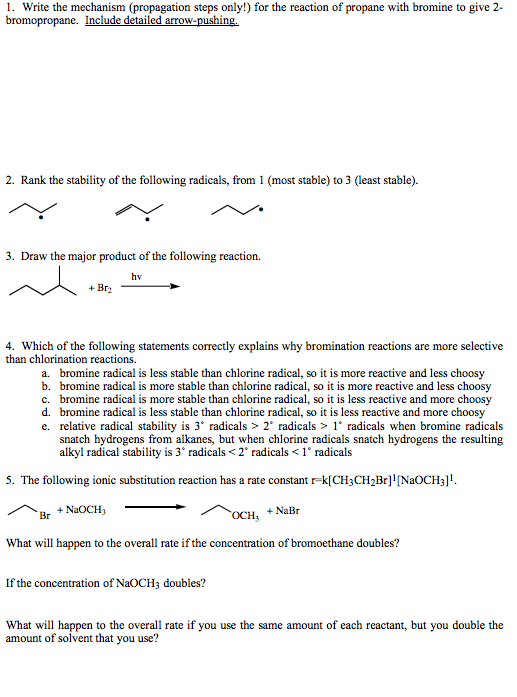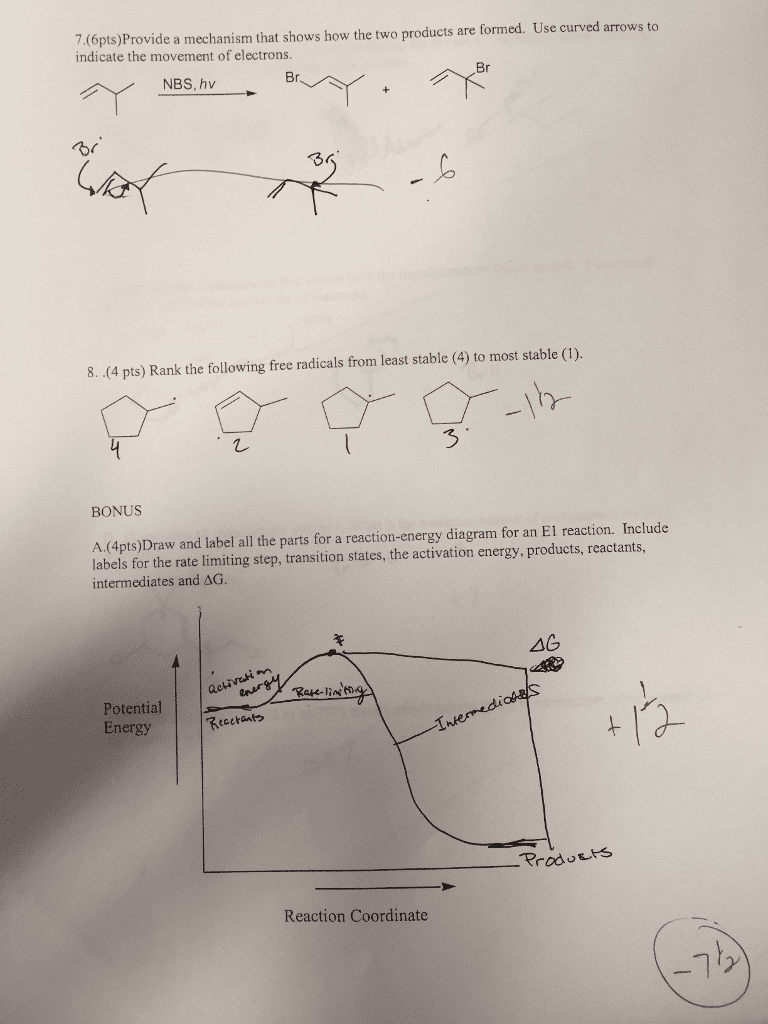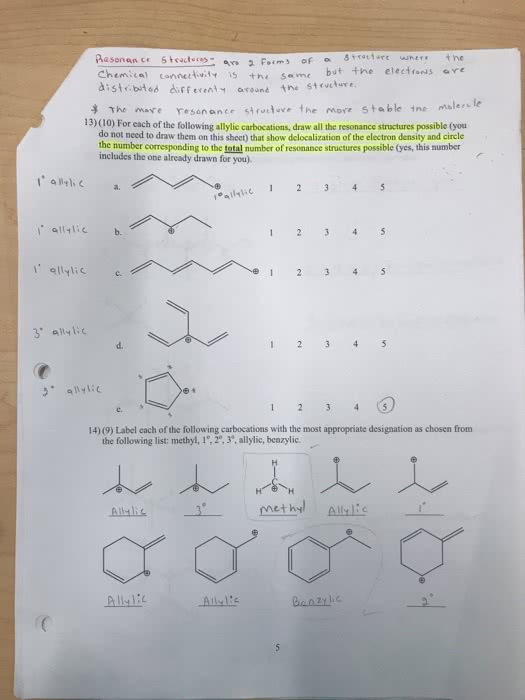CHEM 2OB3 Chapter Notes - Chapter 11: Pi Bond, Chloroform, Thermodynamics
Document Summary
Draw all possible radicals with c h homolytic cleavage. Label: 1", 2", 3", allylic and vinylic. Sp2 trigonal planar due to empty p-orbital (carbocation) vs. sp3 trigonal pyramidal (carboanion) Shape: trigonal planar or shallow pyramid (with inversion: carbon radical has 1 nonbonding electron. Stability: resonance stabilized > tertiary > secondary > primary > methyl > vinlyic radicals: resonance is more stable > hyperconjugation, alkyl groups can stabilized via hyperconjugation, bde is lowest highest. Resonance structures: radical allylic to double bond. Requires heat or light: addition to a pi bond. Create a bond by destroying a pi bond: hydrogen abstraction. Radical takes the h to form a new bond and a new radical. Takes h and it"s electron: halogen abstraction radical, elimination. Radical takes halogen to create a new bond a new. Position with unpaired e- is the alpha position. Double bond forms between alpha and beta position.





